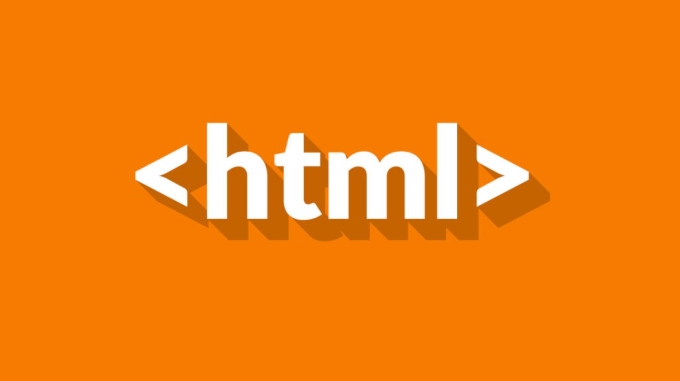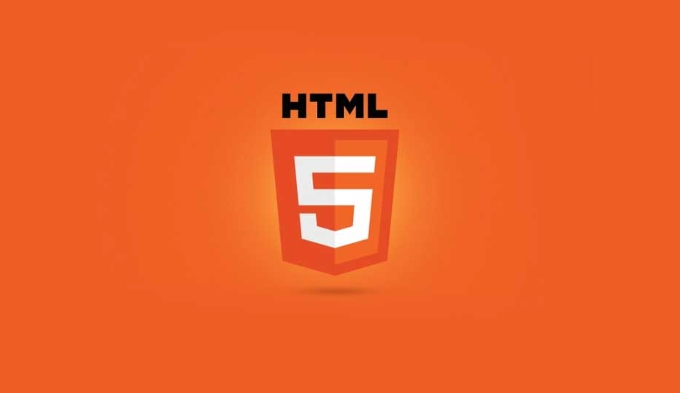To add a video background to a web page, the key is to use the HTML

It is quite common to add a video background to the web page now, such as the full screen animation effect of the home page, the atmosphere of the login page, etc. It is actually not difficult to implement, but there are several key points that need to be paid attention to, otherwise there may be problems such as not playing the video, misalignment of layout, or loading too slowly.

Basic structure: Use <video></video> tag as background
HTML itself does not have the property of "background video", and is not as direct as CSS's background-image . So the usual practice is to use the HTML <video></video> tag and position it at the bottom of the page as a visual "background".

The basic code structure is as follows:
<div class="video-background">
<video autoplay loop muted playsinline>
<source src="your-video.mp4" type="video/mp4">
Your browser does not support the video tag.
</video>
</div>
<!-- The other content of the page is here->Then use a little CSS to fill the entire screen:

.video-background {
position: fixed;
top: 0;
left: 0;
width: 100%;
height: 100%;
overflow: hidden;
z-index: -100;
}
.video-background video {
min-width: 100%;
min-height: 100%;
object-fit: cover;
}This allows the video to fill the entire page and always beneath other content.
Video selection and optimization: Don't ignore performance and compatibility
Although the results have been achieved, there are several areas that are prone to problems that need to be paid attention to:
- Video format :
.mp4is recommended to use first because compatibility is the best. If you are particularly concerned about browser support, you can also add WebM format. - Automatic playback : Many browsers on mobile do not allow automatically playing videos with sound by default, so you must add
mutedandplaysinlineattributes. - Size control : The video is too large (such as a few hundred MB) will seriously affect the loading speed. It is recommended to compress it, keep it at a few dozen MB.
- Loop play : Adding
loopcan make the video seamless loop, avoiding the screen stuck or black screen.
To give a small example:
<video autoplay loop muted playsinline> <source src="bg.mp4" type="video/mp4"> <source src="bg.webm" type="video/webm"> Sorry, your browser doesn't support videos. </video>
Flexible applications in multiple scenarios
In addition to full-screen background video, you can also use it in local areas, such as a section or banner block. You only need to adjust the size of the container, and you don't have to use position: fixed .
For example, make a block with a local video background:
<section class="hero-section">
<div class="video-wrapper">
<video autoplay loop muted playsinline>
<source src="section-bg.mp4" type="video/mp4">
</video>
</div>
<div class="content">
<h1>Welcome to Our Site</h1>
<p>This is the main content. </p>
</div>
</section>CSS is adjusted to relative positioning, covering only the current block:
.hero-section {
position: relative;
height: 500px;
}
.video-wrapper {
position: absolute;
top: 0;
left: 0;
width: 100%;
height: 100%;
overflow: hidden;
z-index: -1;
}
.video-wrapper video {
min-width: 100%;
min-height: 100%;
object-fit: cover;
}This can achieve a richer sense of page hierarchy without affecting overall performance.
Basically that's it. Adding video background with HTML is not complicated, but some details are easy to ignore, such as automatic playback restrictions, video formats, performance optimization, etc. As long as you pay attention to these issues, you can create a beautiful and stable web page background.
The above is the detailed content of How to add a video as a background in HTML?. For more information, please follow other related articles on the PHP Chinese website!

Hot AI Tools

Undress AI Tool
Undress images for free

Undresser.AI Undress
AI-powered app for creating realistic nude photos

AI Clothes Remover
Online AI tool for removing clothes from photos.

Clothoff.io
AI clothes remover

Video Face Swap
Swap faces in any video effortlessly with our completely free AI face swap tool!

Hot Article

Hot Tools

Notepad++7.3.1
Easy-to-use and free code editor

SublimeText3 Chinese version
Chinese version, very easy to use

Zend Studio 13.0.1
Powerful PHP integrated development environment

Dreamweaver CS6
Visual web development tools

SublimeText3 Mac version
God-level code editing software (SublimeText3)

Hot Topics
 Explain the purpose of the role attribute in ARIA.
Jun 14, 2025 am 12:35 AM
Explain the purpose of the role attribute in ARIA.
Jun 14, 2025 am 12:35 AM
ARIA's role attribute is used to define the role of web elements and improve accessibility. 1. Role attribute helps assistive technology to understand the functions of elements, such as buttons, navigation, etc. 2. Use role attributes to assign specific roles to non-semantic HTML elements. 3. The role attribute should be consistent with the element behavior and be verified by the accessibility tool test.
 HTML and Design: Creating the Visual Layout of Websites
Jun 14, 2025 am 12:39 AM
HTML and Design: Creating the Visual Layout of Websites
Jun 14, 2025 am 12:39 AM
How to create a website layout? 1. Use HTML tags to define the content structure, such as, ,. 2. Control styles and positions through CSS, using box model, float or Flexbox layout. 3. Optimize performance, reduce HTTP requests, use cache and optimize images, and ensure responsive design.
 How can you ensure your HTML code is readable and maintainable?
Jun 10, 2025 am 12:06 AM
How can you ensure your HTML code is readable and maintainable?
Jun 10, 2025 am 12:06 AM
Improve the readability and maintainability of HTML code can be achieved through the following steps: 1. Use semantic tags, such as, etc. to make the code structure clear and improve SEO effect; 2. Keep the code formatted and use consistent indentation and spaces; 3. Add appropriate comments to explain the code intention; 4. Avoid excessive nesting and simplify the structure; 5. Use external style sheets and scripts to keep the HTML concise.
 How do I stay up-to-date with the latest HTML standards and best practices?
Jun 20, 2025 am 08:33 AM
How do I stay up-to-date with the latest HTML standards and best practices?
Jun 20, 2025 am 08:33 AM
The key to keep up with HTML standards and best practices is to do it intentionally rather than follow it blindly. First, follow the summary or update logs of official sources such as WHATWG and W3C, understand new tags (such as) and attributes, and use them as references to solve difficult problems; second, subscribe to trusted web development newsletters and blogs, spend 10-15 minutes a week to browse updates, focus on actual use cases rather than just collecting articles; second, use developer tools and linters such as HTMLHint to optimize the code structure through instant feedback; finally, interact with the developer community, share experiences and learn other people's practical skills, so as to continuously improve HTML skills.
 How do I use the element to represent the main content of a document?
Jun 19, 2025 pm 11:09 PM
How do I use the element to represent the main content of a document?
Jun 19, 2025 pm 11:09 PM
The reason for using tags is to improve the semantic structure and accessibility of web pages, make it easier for screen readers and search engines to understand page content, and allow users to quickly jump to core content. Here are the key points: 1. Each page should contain only one element; 2. It should not include content that is repeated across pages (such as sidebars or footers); 3. It can be used in conjunction with ARIA properties to enhance accessibility. Usually located after and before, it is used to wrap unique page content, such as articles, forms or product details, and should be avoided in, or in; to improve accessibility, aria-labeledby or aria-label can be used to clearly identify parts.
 How do I create a basic HTML document?
Jun 19, 2025 pm 11:01 PM
How do I create a basic HTML document?
Jun 19, 2025 pm 11:01 PM
To create a basic HTML document, you first need to understand its basic structure and write code in a standard format. 1. Use the declaration document type at the beginning; 2. Use the tag to wrap the entire content; 3. Include and two main parts in it, which are used to store metadata such as titles, style sheet links, etc., and include user-visible content such as titles, paragraphs, pictures and links; 4. Save the file in .html format and open the viewing effect in the browser; 5. Then you can gradually add more elements to enrich the page content. Follow these steps to quickly build a basic web page.
 How do I create checkboxes in HTML using the element?
Jun 19, 2025 pm 11:41 PM
How do I create checkboxes in HTML using the element?
Jun 19, 2025 pm 11:41 PM
To create an HTML checkbox, use the type attribute to set the element of the checkbox. 1. The basic structure includes id, name and label tags to ensure that clicking text can switch options; 2. Multiple related check boxes should use the same name but different values, and wrap them with fieldset to improve accessibility; 3. Hide native controls when customizing styles and use CSS to design alternative elements while maintaining the complete functions; 4. Ensure availability, pair labels, support keyboard navigation, and avoid relying on only visual prompts. The above steps can help developers correctly implement checkbox components that have both functional and aesthetics.
 What is an HTML tag?
Jun 13, 2025 am 12:36 AM
What is an HTML tag?
Jun 13, 2025 am 12:36 AM
HTMLtagsareessentialforstructuringwebpages.Theydefinecontentandlayoutusinganglebrackets,ofteninpairslikeand,withsomebeingself-closinglike.HTMLtagsarecrucialforcreatingstructured,accessible,andSEO-friendlywebpages.






